 by our College Data Analytics Team
by our College Data Analytics TeamUSD total enrollment is approximately 9,459 students. 4,741 are undergraduates and 1,324 are graduate students.
Male/Female Breakdown of Undergraduates
The full-time USD undergraduate population is made up of 63% women, and 37% men.

For the gender breakdown for all students, go here.
USD Racial/Ethnic Breakdown of Undergraduates
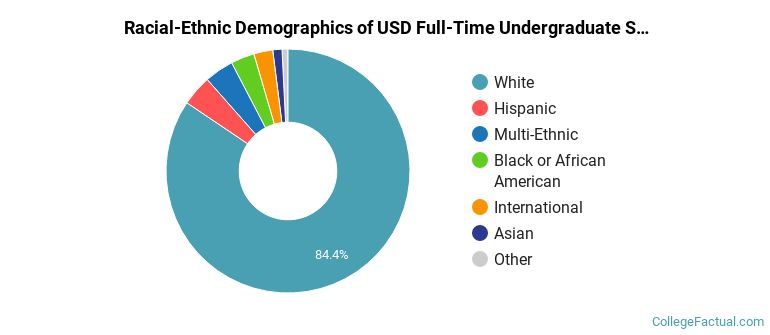
| Race/Ethnicity | Number |
|---|---|
| White | 3,974 |
| Hispanic | 193 |
| Multi-Ethnic | 173 |
| Black or African American | 141 |
| International | 94 |
| Asian | 61 |
| Unknown | 43 |
| Native Hawaiian or Pacific Islander | 2 |
See racial/ethnic breakdown for all students.
Male/Female Breakdown of Graduate Students
About 58% of full-time grad students are women, and 42% men.
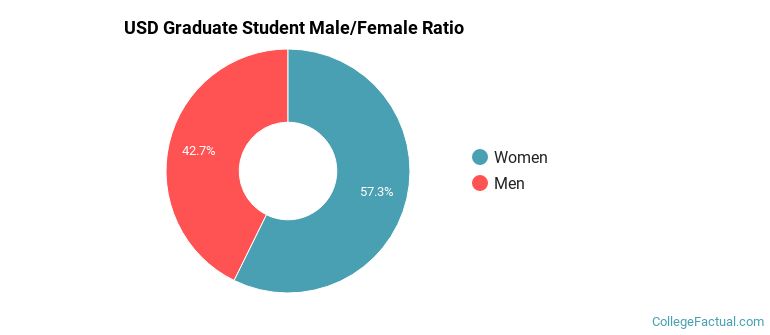
For the gender breakdown for all students, go here.
USD Racial-Ethnic Breakdown of Graduate Students

| Race/Ethnicity | Number |
|---|---|
| White | 1,082 |
| International | 88 |
| Multi-Ethnic | 37 |
| Asian | 28 |
| Unknown | 25 |
| Hispanic | 21 |
| Black or African American | 17 |
| Native Hawaiian or Pacific Islander | 1 |
See racial/ethnic breakdown for all students.
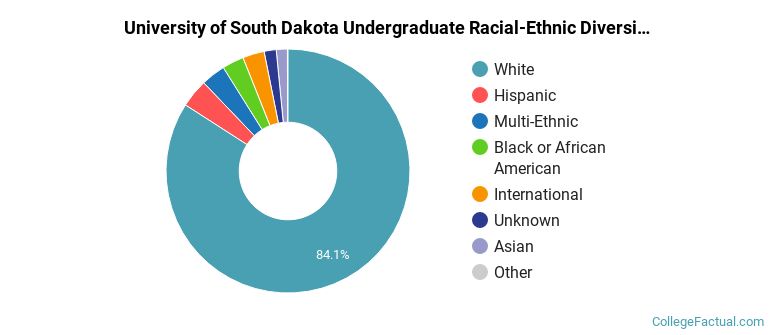
| Race/Ethnicity | Number |
|---|---|
| White | 7,793 |
| Hispanic | 337 |
| Multi-Ethnic | 331 |
| Black or African American | 255 |
| Unknown | 234 |
| International | 217 |
| Asian | 141 |
| Native Hawaiian or Pacific Islander | 5 |

There are approximately 6,021 female students and 3,438 male students at USD.
USD ranks 525 out of 2,183 when it comes to geographic diversity.
35.6% of USD students come from out of state, and 0% come from out of the country.
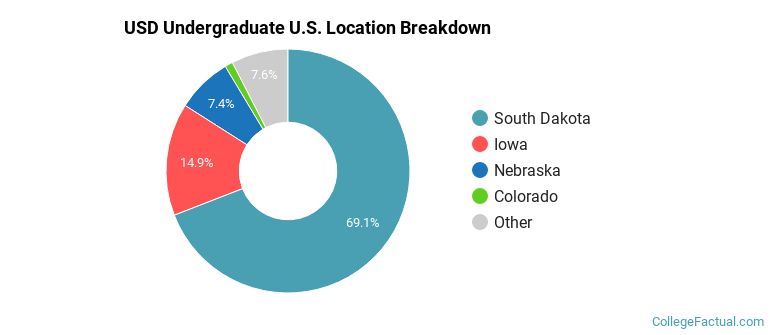
The undergraduate student body is split among 35 states (may include Washington D.C.). Click on the map for more detail.
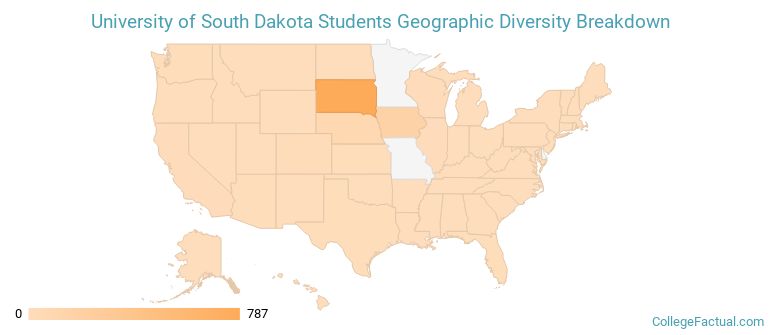
| State | Amount |
|---|---|
| South Dakota | 787 |
| Iowa | 170 |
| Nebraska | 84 |
| Colorado | 12 |
| Illinois | 10 |
Students from 63 countries are represented at this school, with the majority of the international students coming from China, India, and Nepal.
Learn more about international students at USD.
A traditional college student is defined as being between the ages of 18-21. At USD, 45.91% of students fall into that category, compared to the national average of 60%.
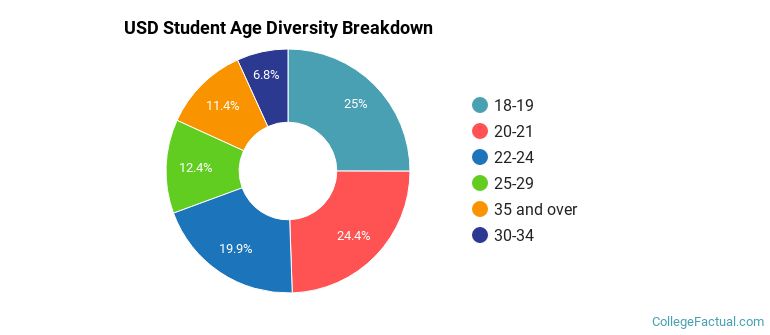
| Student Age Group | Amount |
|---|---|
| 18-19 | 2,384 |
| 20-21 | 2,327 |
| 22-24 | 1,900 |
| 25-29 | 1,184 |
| 35 and over | 1,085 |
| 30-34 | 648 |
| Under 18 | 0 |
Footnotes
*The racial-ethnic minorities count is calculated by taking the total number of students and subtracting white students, international students, and students whose race/ethnicity was unknown. This number is then divided by the total number of students at the school to obtain the racial-ethnic minorities percentage.
References
Department of Homeland Security Citizenship and Immigration Services
Image Credit: By Ammodramus under License
Learn more about how College Factual creates their Diversity Rankings.